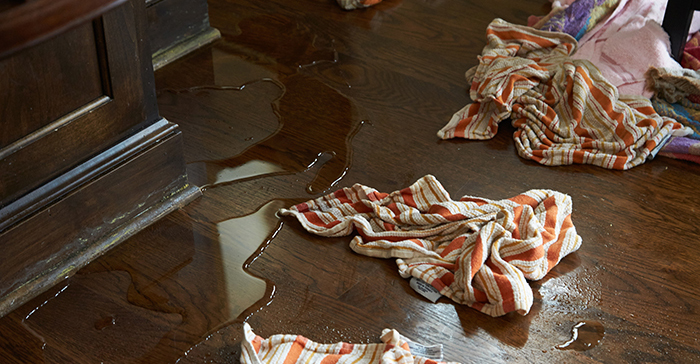Bathroom Water Damage - Ways To Prevent This Happening
Bathroom Water Damage - Ways To Prevent This Happening
Blog Article
Just how do you actually feel in relation to How to Repair and Prevent Bathroom Water Damage?

The washroom is exceptionally at risk for wet buildup as well as prospective water damage due to the constant use water in it. This write-up uses basic assessment techniques to help finding water damages risks.
The frequent use of water in the washroom makes it very prone for moist accumulation as well as prospective water damage. By inspecting it routinely, you can lower water associated damages.
The following collection of examinations is very easy to carry out and must be done when in every three months in order to maintain your shower room in good shape and also to avoid potential water problems triggered by the bathtub, the shower, pipeline joints as well as plumbing, sinks, cabinets, and also the bathroom
Do not neglect executing these assessments and be detailed while doing them. Keep in mind that these straightforward evaluations can conserve you a lot of cash by supplying early signs for water damage
Bath tub as well as Shower
The shower and also tub call for special attention as well as maintenance. Inspect the tiles as well as replace if split. Make sure that there is no missing out on grout in between the tiles. Check and change cracked caulking at joints where the wall surfaces fulfill the floor or the bath tub. Clogged drains pipes and pipelines problems will protect against the tub from drying out and might show major troubles below the bath tub. Talk to a professional quickly to prevent architectural damage. Focus on discolorations or soft locations around the bathtub walls as they might suggest an inner leak.
Plumbing
Signs for water damages are hard to find since many pipelines are installed inside the wall surfaces.
Pay special interest to floor covering and wall surfaces moisture as well as discolorations as they may indicate an undetectable plumbing problem. Inspect dampness levels in adjoining areas as well.
Sinks and Cabinets
Sinks as well as closets are exposed to dampness and humidity everyday and also are frequently ignored. Check regularly under the sink as well as on the counter top over it. Repair any kind of drip in the catch as it may suggest drainpipe troubles. Look around the sink, sluggish draining pipelines might indicate a blocked drainpipe. Replace sink seals if they are split or loosened.
The Toilet
The toilet is a susceptible water joint. Examine the water lines and also search for leaks around the bathroom seat, in the pipe, and also under the water tank. If you spot any type of indicators of dampness on the flooring around the toilet, look for leakages in the toilet edge and tank seals.
Understand that hanging bathroom dish antiperspirants raises the chances for clogs.
TIPS TO PREVENT WATER DAMAGE IN THE BATHROOM
The average household uses approximately 80-100 gallons of water per person per day. For a family of 4, that's almost 2,500 gallons of water a week! The largest portion of this consumption comes from bathroom use. Flushing the toilet uses the most water, followed by taking a shower or bath. With that much water running through the home, water damage in the bathroom is bound to happen. Knowing how to spot signs of a water leak is essential to preventing long-term damage. This guide provides you with tips to reduce the impact of water damage on your bathroom.
CAUSES OF BATHROOM WATER DAMAGE
Pipe breaks are the most common cause of water damage we see in our daily jobs. The age of a pipe plays a large role in a pipe break as well as corrosion. Over time, the metal begins to break down, allowing water to escape. Frozen pipe breaks are also a concern in the winter months. Toilet overflows caused by paper products or children flushing inappropriate items. Degraded caulking around the toilet or bathtub can allow water seepage, sometimes behind the fixture, into the subfloor or walls. Condensation forms when the water in a pipe is cooler than the air temperature. Beads of water form on the exterior of the pipes, sometimes so much so that the water begins to drip and pool below. Sink or shower backups created by poor drainage. HOW TO PREVENT WATER DAMAGE IN YOUR BATHROOM
Inspect your toilet supply line for worn or frayed hoses and replace them as needed. Winterize your plumbing to prevent a frozen pipe break. Use vent fans to prevent condensation that can lead to mold growth. Routinely check and replace degraded caulking around your toilet or bathtub. Increase the temperature in your toilet tank and insulate your pipes during the warm summer months to keep condensation from forming. Use child safety locks on the toilets. Flush only toilet paper. "Flushable" wet wipes are actually not good for your plumbing system. Additionally, feminine hygiene products should not be flushed. Prevent water from escaping the tub or shower. Make sure shower curtains are in good condition. Inspect shower doors and replace the seal strip if necessary. Wipe up any water that accumulates on the floor and use bath mats. Water left to sit can cause damage to the tiles and flooring. Refrain from using bath products containing heavy oils to avoid a clogged drain.

Do you like more info about Looking for Signs of Water Damage in the Bathroom? Try to leave a review further down. We would be glad to find out your responses about this write up. We are looking forward to see you back again in the near future. Sharing is nice. One never knows, you could be doing someone a favor. Thanks so much for your time spent reading it.
Schedule Report this page